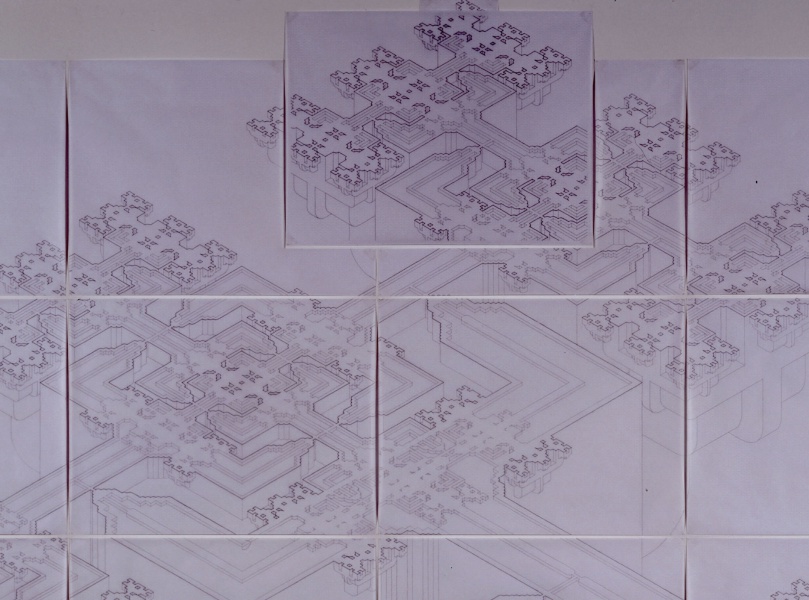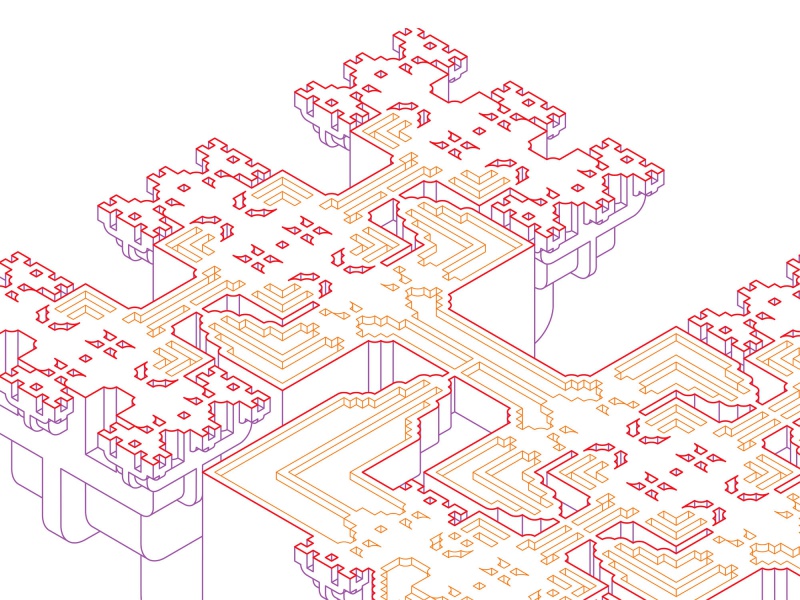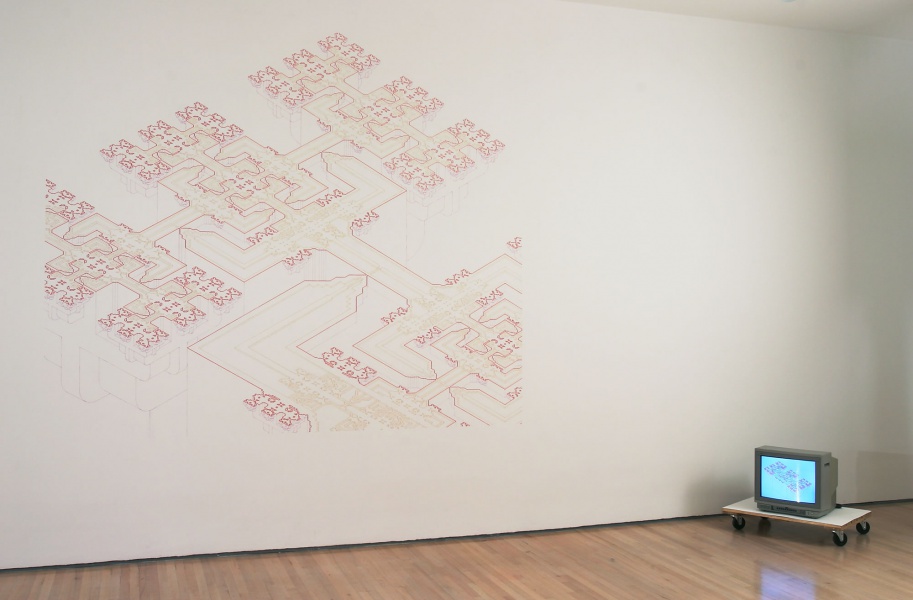Disobey This Command! 8:20, High definition digital animation with music by Douglas Henderson, 2007

The animation grew out of a series of color pencil drawings I made beginning in 1999 depicting a bracket-like structure on an isometric grid. For a 2001 exhibition, at Bill Maynes Gallery in NYC, I lined up 21 such sheets into a large array so as to continue the recursive growth process through eight generations, until the orientation rotated back to that of the of the original drawing –– in effect reproducing it at a much larger scale. For the Drawing Center exhibition, Playpen, I drew a new version of this large drawing directly on the wall in pencil and ink. Since the artists were invited to make interactive or changeable work, I began to animate a virtual 3-D version of the motif during the exhibition –– each week adding a new episode, beginning with the smallest bracket and ending with the full eight generations depicted in the wall drawing.

For this animation I developed a new approach to integrating 2-D and 3-D space. With Proliferation and other works I had modeled in 3-D space, then moved the camera far back while zooming in to maximal focal length. In this way, I was able to mimic the perspective-less look of isometric drawing. For Disobey, I made 3-D models (in gray), as before, but superimposed precisely aligned sections of the isometric digital drawing (in color) between camera and model in the manner of a vintage “glass shot” special effect. The resulting silent animation was shown on a monitor on the floor (the only time, to my knowledge, that a video monitor has been used in an exhibition at the Drawing Center).

The title phrase, “Disobey this command!” comes from the writings of Douglas Hofstadter. The phrase is self-contradictory — to disobey the command is to obey it, and vice-versa — and an example of what Hofstadter calls a “strange loop.” The uncanny, but logical, property of self-similarity evident in the drawing, a by-product of its recursive structure, is perhaps strange in this sense. It loops back to its beginning as it grows. The dramatic structure of the animation was foreordained by this property. Thus, when I decided to rework the piece into a finished film, I knew that an effective cinematic experience would depend, even more than usual, on the sound score. I was fortunate that sound artist Douglas Henderson, whose work I greatly admired, agreed to work as a full collaborator on the film. His beautiful composition of densely accumulating textures is subtly timed to the structure of the animation, and the mood of profound mystery it creates is ideal. The finished animation with the original 6-channel sound score was installed at Pierogi Leipzig in 2008, and has been screened in a number of other venues.